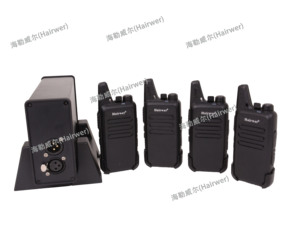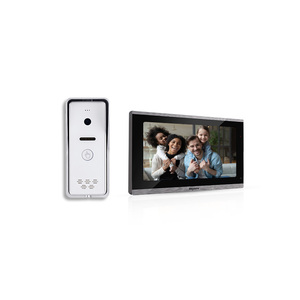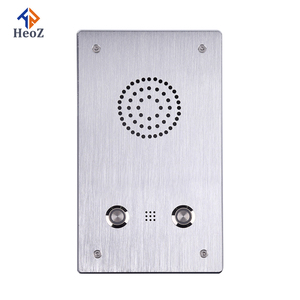(151 products available)

































































































































































































































A wireless school intercom system enhances communication between different departments in a school. The system allows two-way communication between the transmitter and receiver. The intercom system is also connected to a central control unit that serves as the office. Intercom systems are important for improving productivity and enhancing employee satisfaction.
The different types of intercom systems include:
School intercom systems can connect all areas of a school. They allow quick and clear communication throughout the entire school. Here are a few functions and features of school intercom systems:
Talking and Listening Capabilities
A wireless intercom system for schools allows communication between two or more people at different places. Some intercom systems will allow one person to press and hold a button while talking to another. When the button is released, listening will begin. In some systems, the talk and listen functions will operate simultaneously.
Emergency Alerts
The intercom system is used to provide alert signals. During specific situations like emergencies, lockdowns, severe weather, etc., schools may sound emergency alerts through the intercom system. Policemen and school safety experts suggest that intercom systems should be emergency alert tools. If teachers or staff members feel something unusual is going on, they can push an emergency signal button that alerts first responders.
Broadcasting
The intercom system provides many benefits to a learning workplace. With a PA system, broadcast announcements can be made, and notices can be handed out and captured by several people at once. Presentation is a significant option on the intercom system. The message can be audio, text, or both. School assemblies, important sessions, and special events all receive broadcast programming to enhance attendance and participation. All students should listen to safety protocols, review changes in policy, receive event scheduling, and participate in drills.
Intercom Connectivity
Schools with multiple buildings, especially large campuses, may need wireless communication to connect classrooms, offices, and other facilities. A good intercom system allows smooth connections among schools, where staff can share information, discuss issues, and receive directions. Intercom connection enables fast responses to different situations.
Message Sending and Receiving
The intercom system has a message feature that teachers and school staff can use to send and receive written messages. Teachers can communicate with each other, and urgent message delivery becomes easy. Principle and administration messages can also be sent to teachers through the intercom messaging system. The messaging function allows routine school tasks to be carried out more efficiently.
Wireless intercom school systems have wide applicability beyond traditional schools. Here are some possible applications:
Elementary and Secondary Schools:
Campus safety can be improved and emergencies responded to quickly with intercom systems. They also provide communication tools for teachers, management, and support staff. Classrooms, libraries, cafeterias, playgrounds, and administrative offices can connect through intercoms.
Universities and Colleges:
Intercoms can bridge communication gaps across multiple campus buildings. Faculty members, students, and administrative staff can all communicate efficiently. This helps for timely reporting of security issues, facilities management, and routine operations.
Specialty Schools:
Schools with specific focus areas – like performing arts, vocational training, or outdoor education – can benefit too. Intercom systems allow coordination between instructors, students, and support personnel. Enhanced communication can improve safety during specialized training programs.
Large School Districts:
Intercom systems provide a single communication platform for managing operations across multiple schools. Administrators can relay information quickly to staff and foster collaboration between different campuses.
Remote Learning Environments:
For future education models blending physical and virtual classrooms, intercoms can help connect teachers with remote students and facilitate interaction. Enhanced communication can make hybrid learning more effective.
School Support Services:
Intercom systems link counselors, nurses, maintenance staff, security personnel, and other support roles. Timely reporting of issues like health crises, technical problems, or safety risks can be achieved.
School District Administration Centers:
A wireless intercom system can enhance communication among decision-makers. Educational administrators can use it to relay messages efficiently during policy implementation, monitoring programs, and responding to incidents.
School Security Surveillance:
Intercom systems can integrate with security cameras and access control systems to monitor premises. Security personnel and authorized staff can receive alerts and discuss concerns. Quick response to security breaches is possible.
Facility Management:
Intercoms provide an effective communication tool among maintenance staff, custodians, and building managers. Collaborative efforts between different roles can ensure that facilities are well-kept and that any arising issues are promptly addressed.
After-School Programs:
Programs like tutoring, sports, or enrichment activities can enhance their organization with intercom systems. Supervisors and instructors can communicate to discuss participants' safety, program delivery, and logistics.
There are a few things to consider when selecting a wireless intercom system. First, determine the number of devices and range required. Choose a system that can connect to the number of intercom stations. If there are multiple buildings on the campus, pick a system that can cover the entire campus.
Next, explore the different types of communication options available. Some systems offer one-way communication, while others provide two-way conversations. One-way intercoms can be used to send messages to teachers and staff, whereas two-way intercoms allow users to send and receive responses back.
Users need to pick a system that is user-friendly and easy to operate. It should have simple controls to make communication seamless. Finally, consider the system's scalability. As the campus grows, the intercom system should be able to expand and adapt to new technologies.
Below are more factors to consider when choosing a wireless intercom system:
Q1 What is the ideal school intercom system?
A1 The best intercom for schools offers clear communication, reliable performance, ease of use, and integration with other security systems.
Q2 What is the role of a intercom system in a school environment?
A2 It facilitates effective communication between administrators, teachers, and security personnel. It sends timely alerts during emergencies. Also, it improves the efficiency of routine operations like attendance taking and class changing.
Q3 Why should schools upgrade their intercom system?
A3 Older systems may not integrate with modern security solutions. They also lack features like clear audio/ video quality, emergency alerting, and lockdown capabilities. New systems provide better performance, features and safety.
Q4 How easy is it to use the intercom system?
A4 The intercom system is user-friendly with simple controls on handsets or touch screens. Users can quickly learn the basic functions of making calls, answering, and broadcasting an alert.
Q5 How can a school improve the intercom system?
A5 Users can periodically update the system software to improve functionality and features. Also, provide training for staff to keep them up to date on new features and best operating practices.